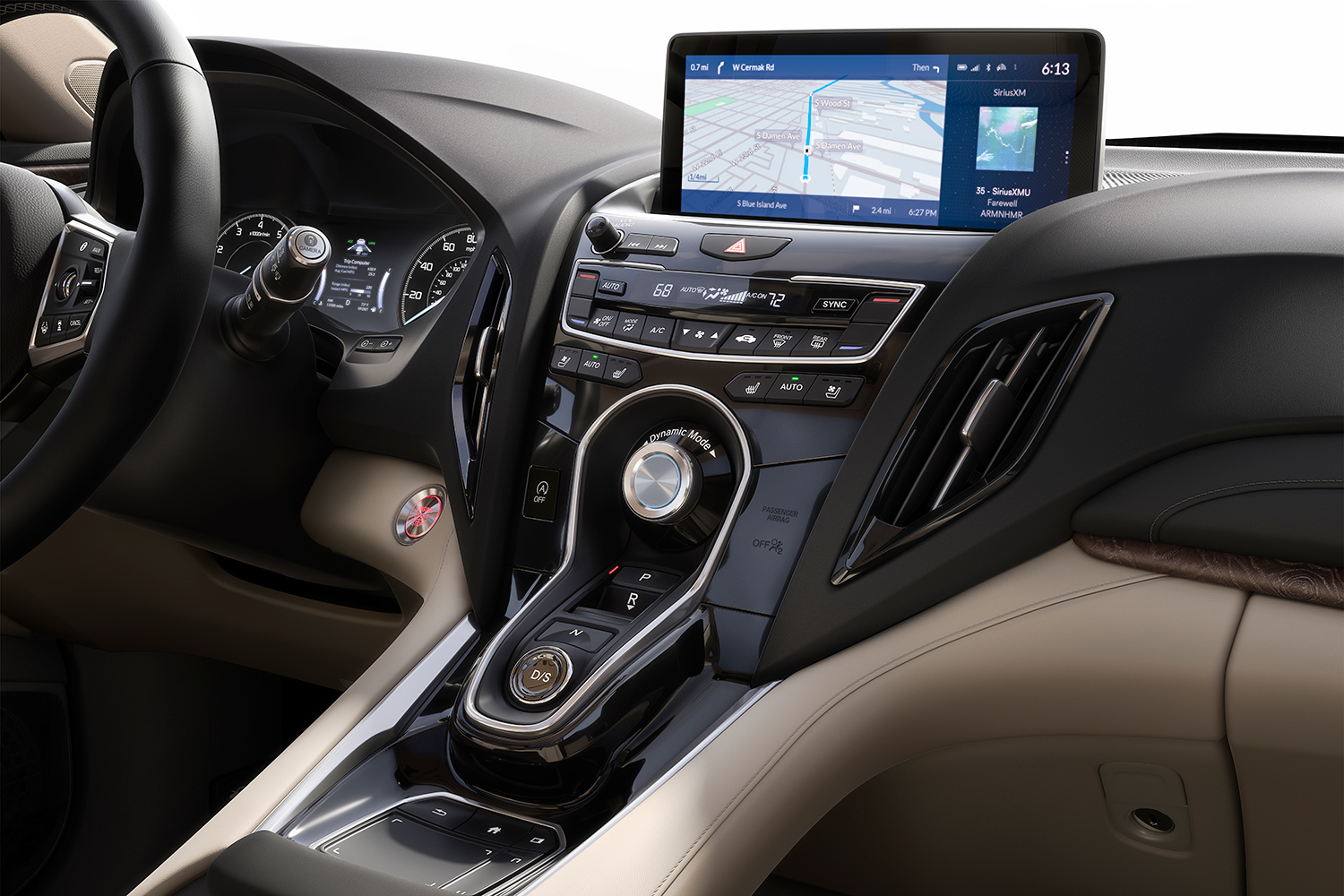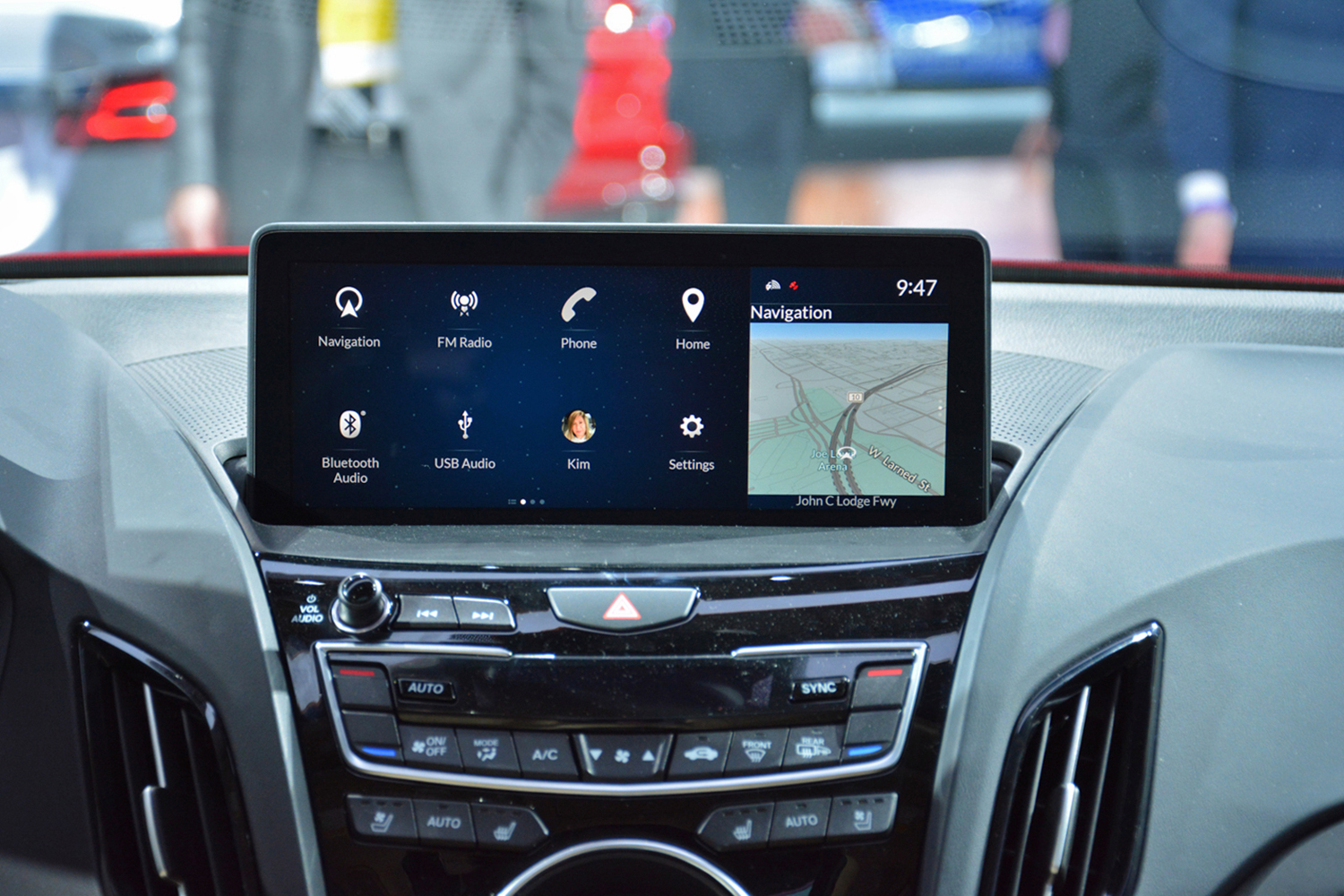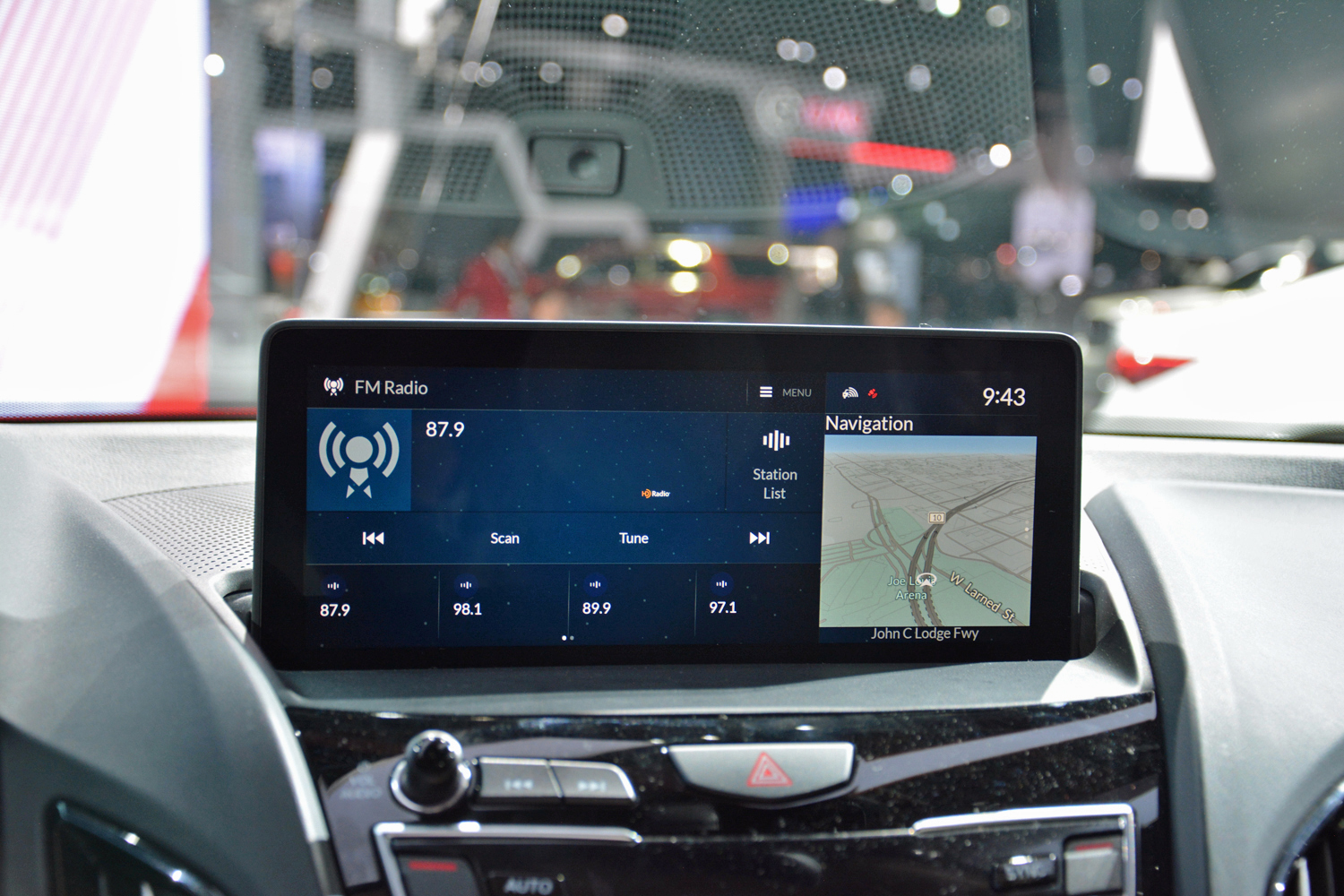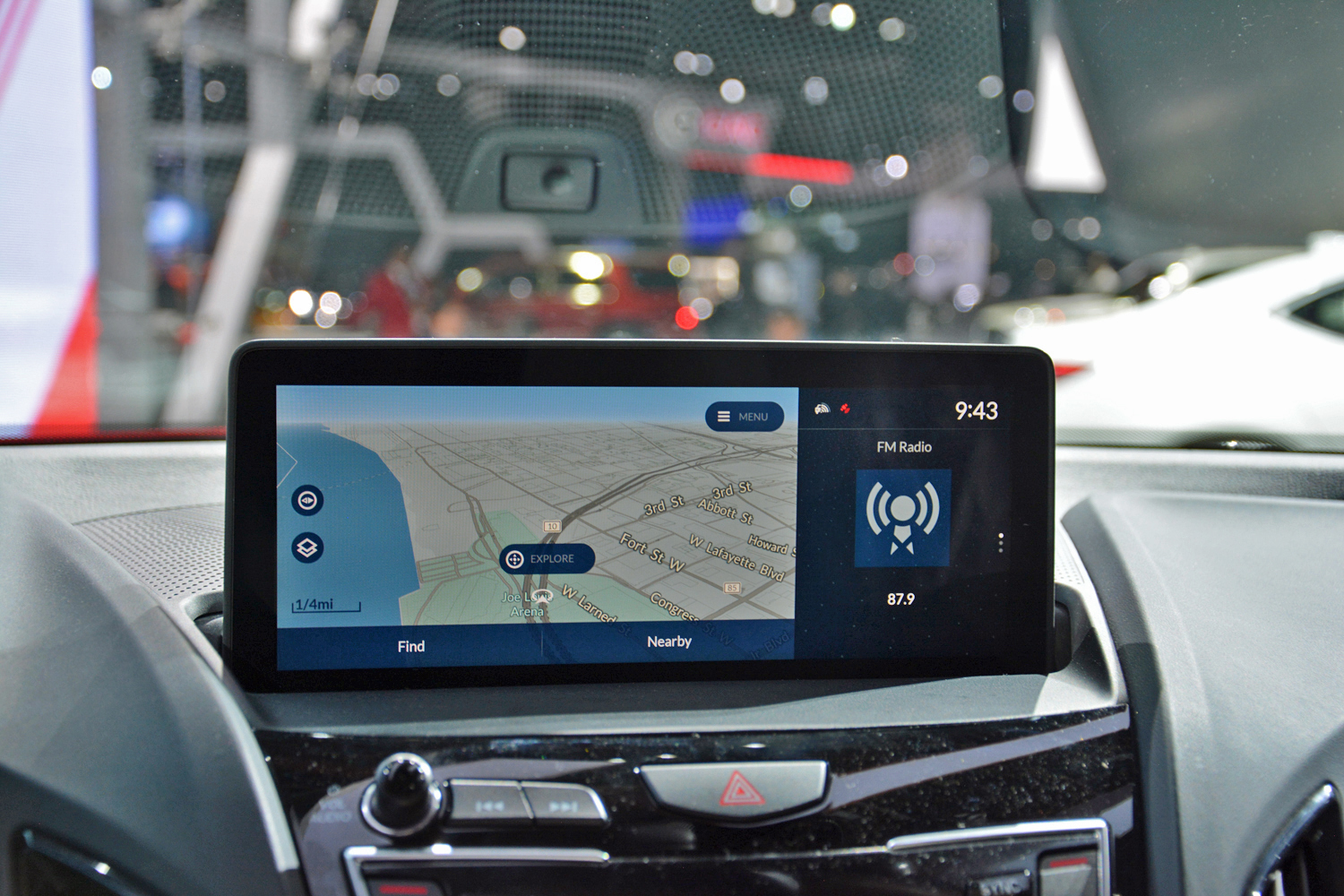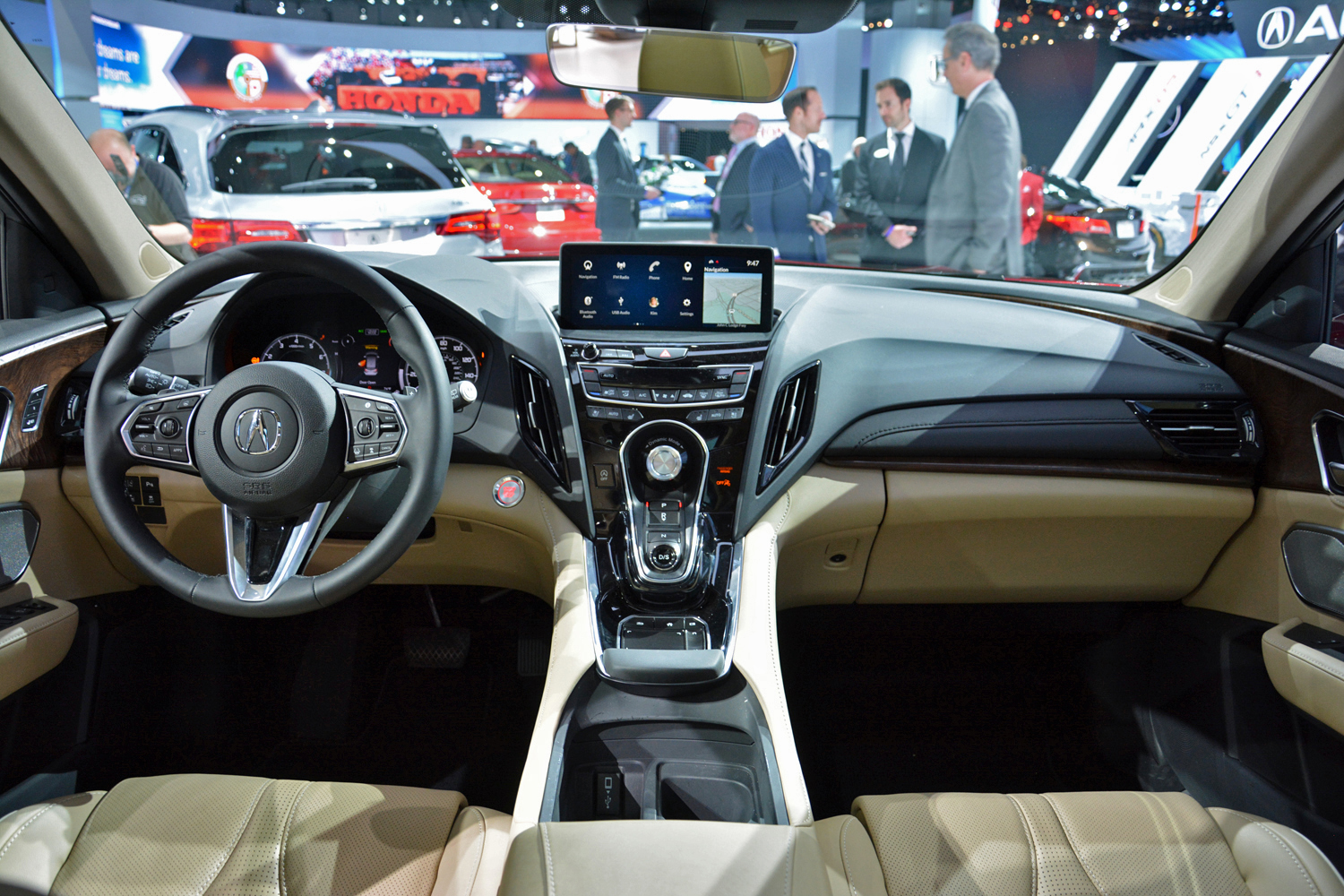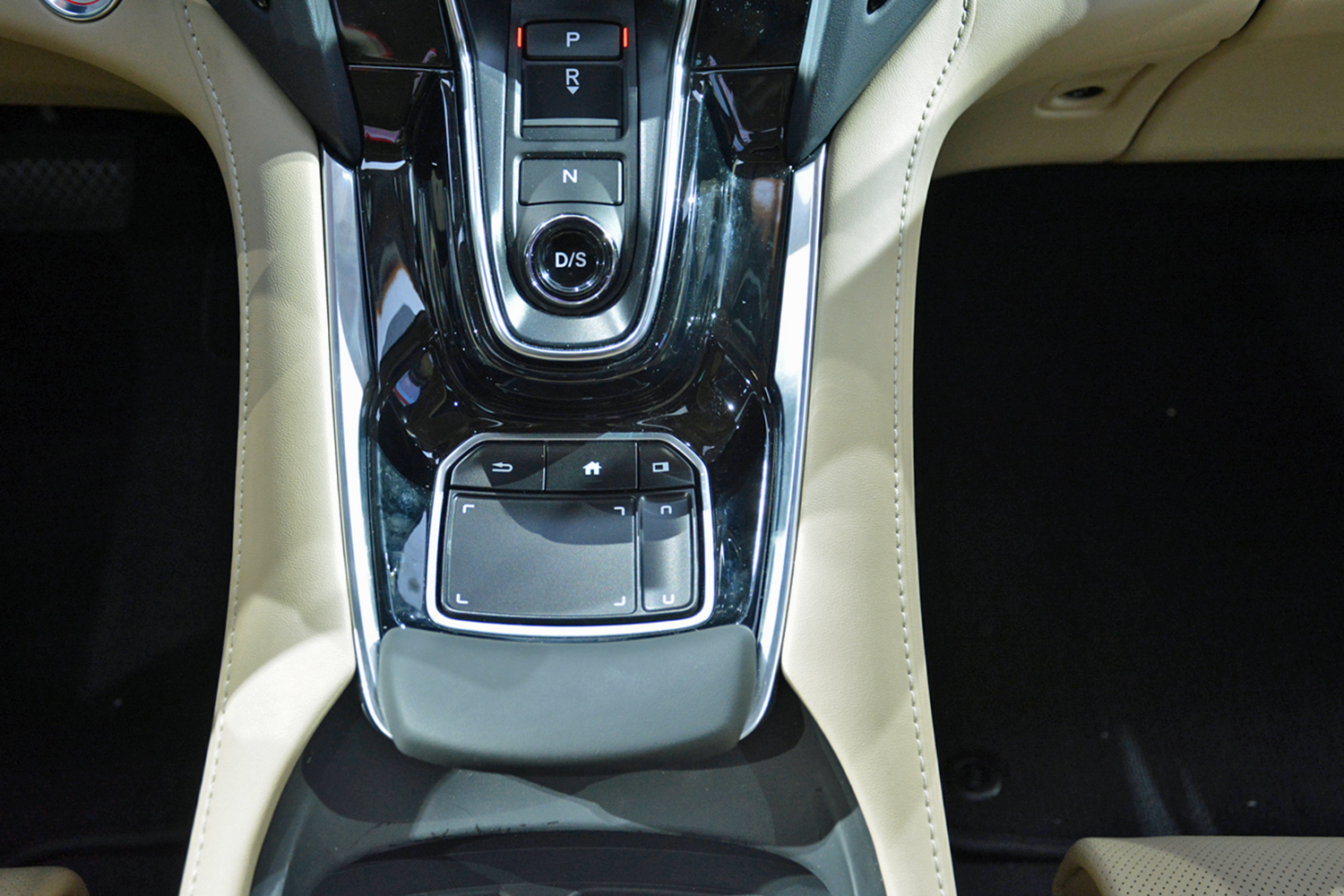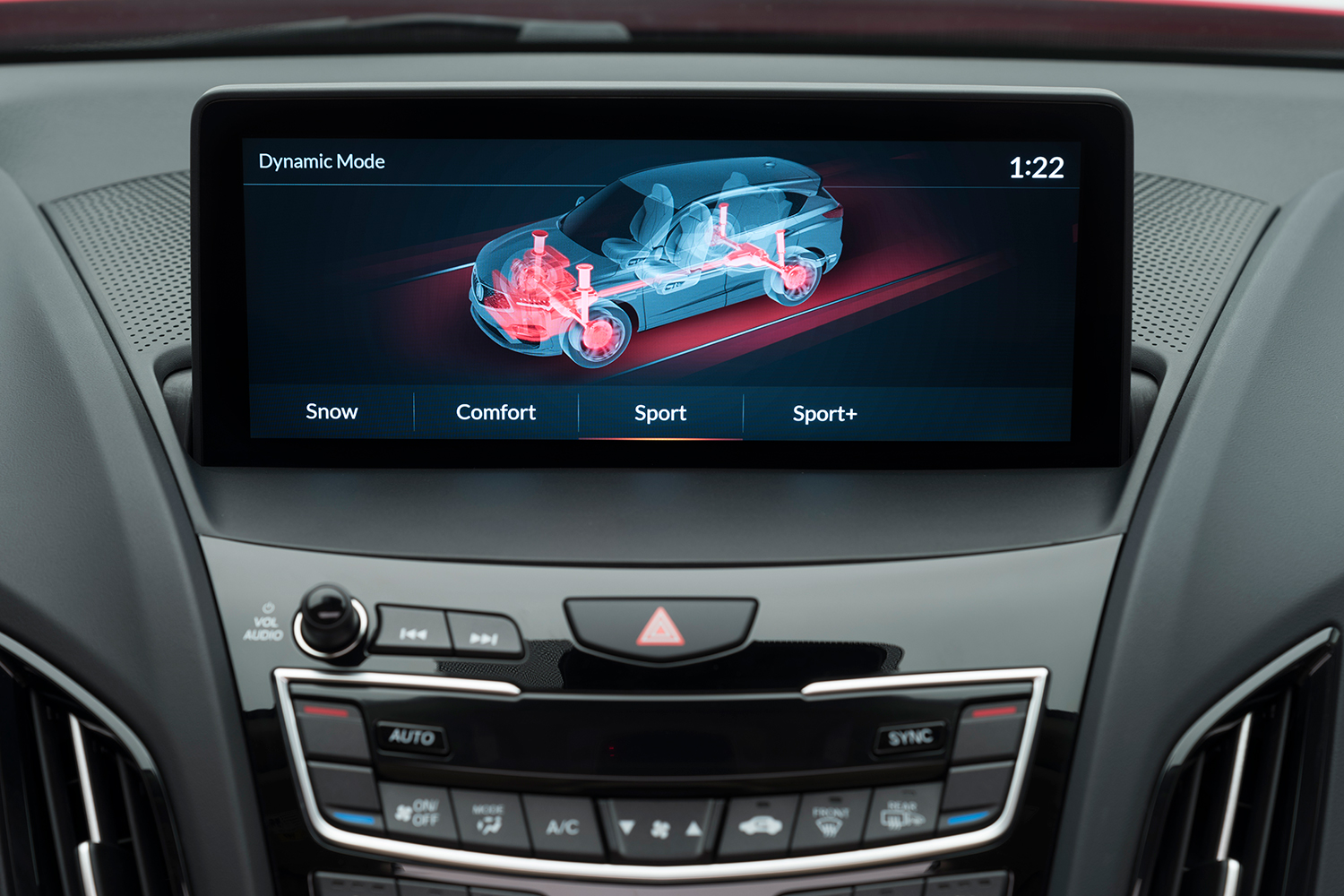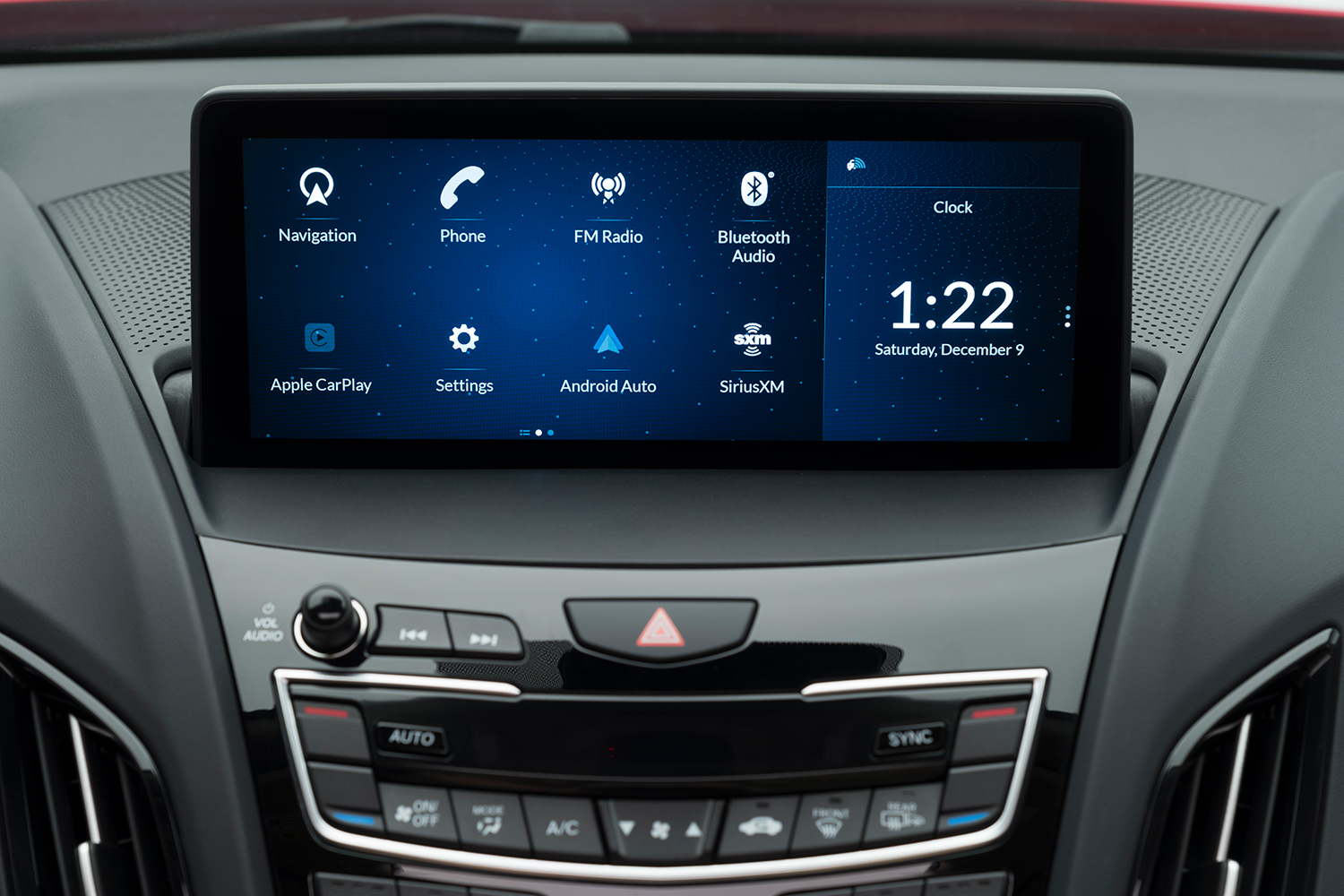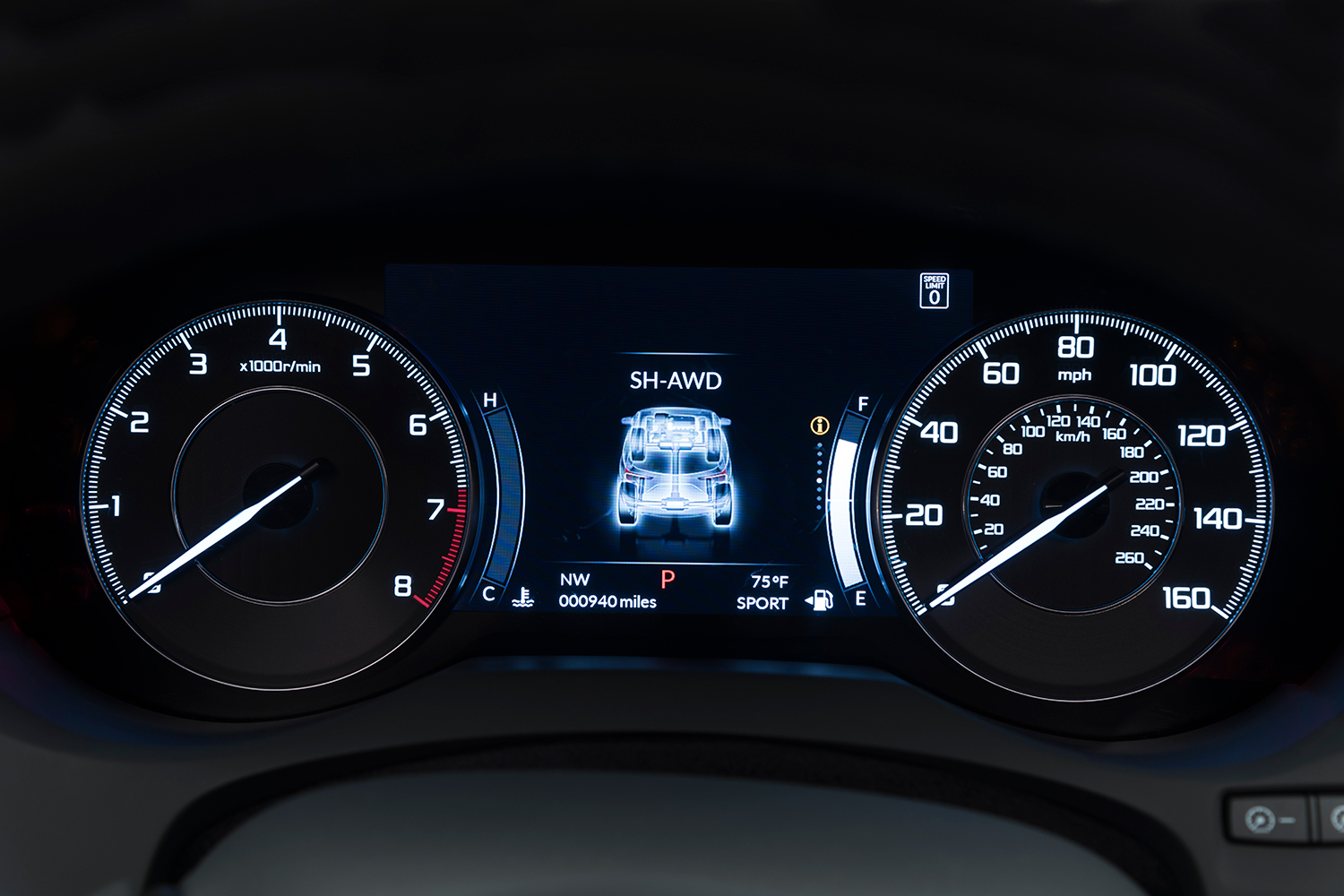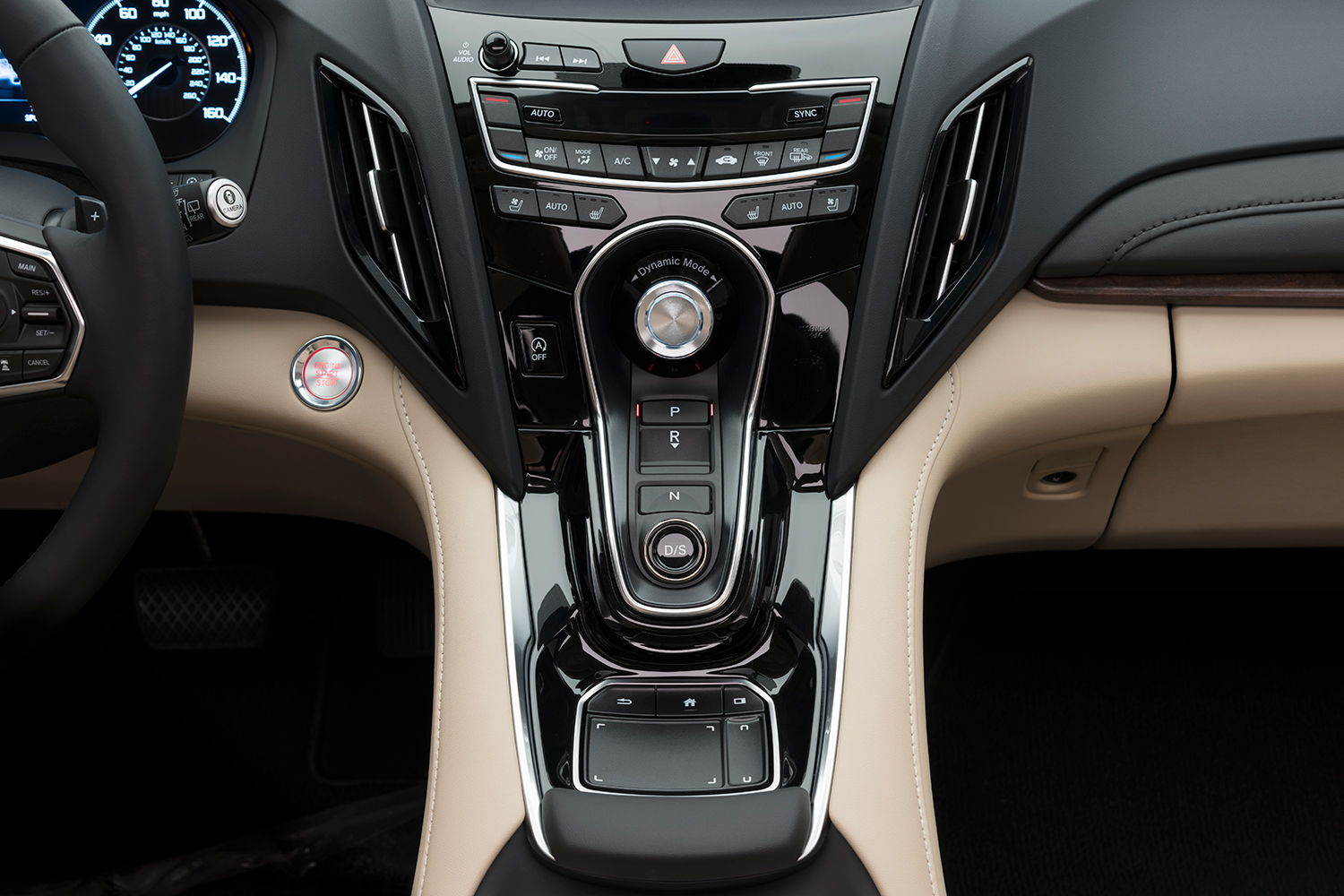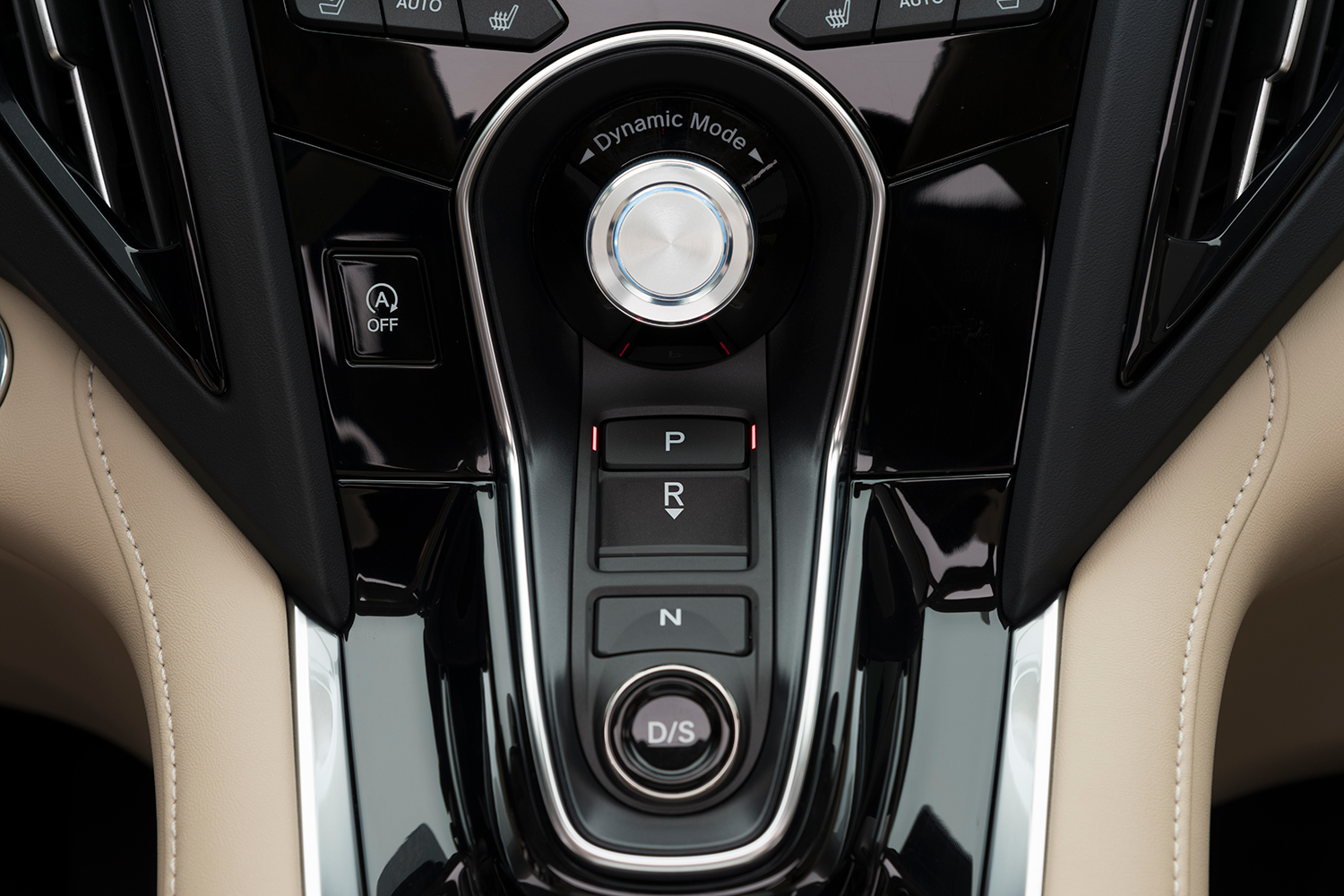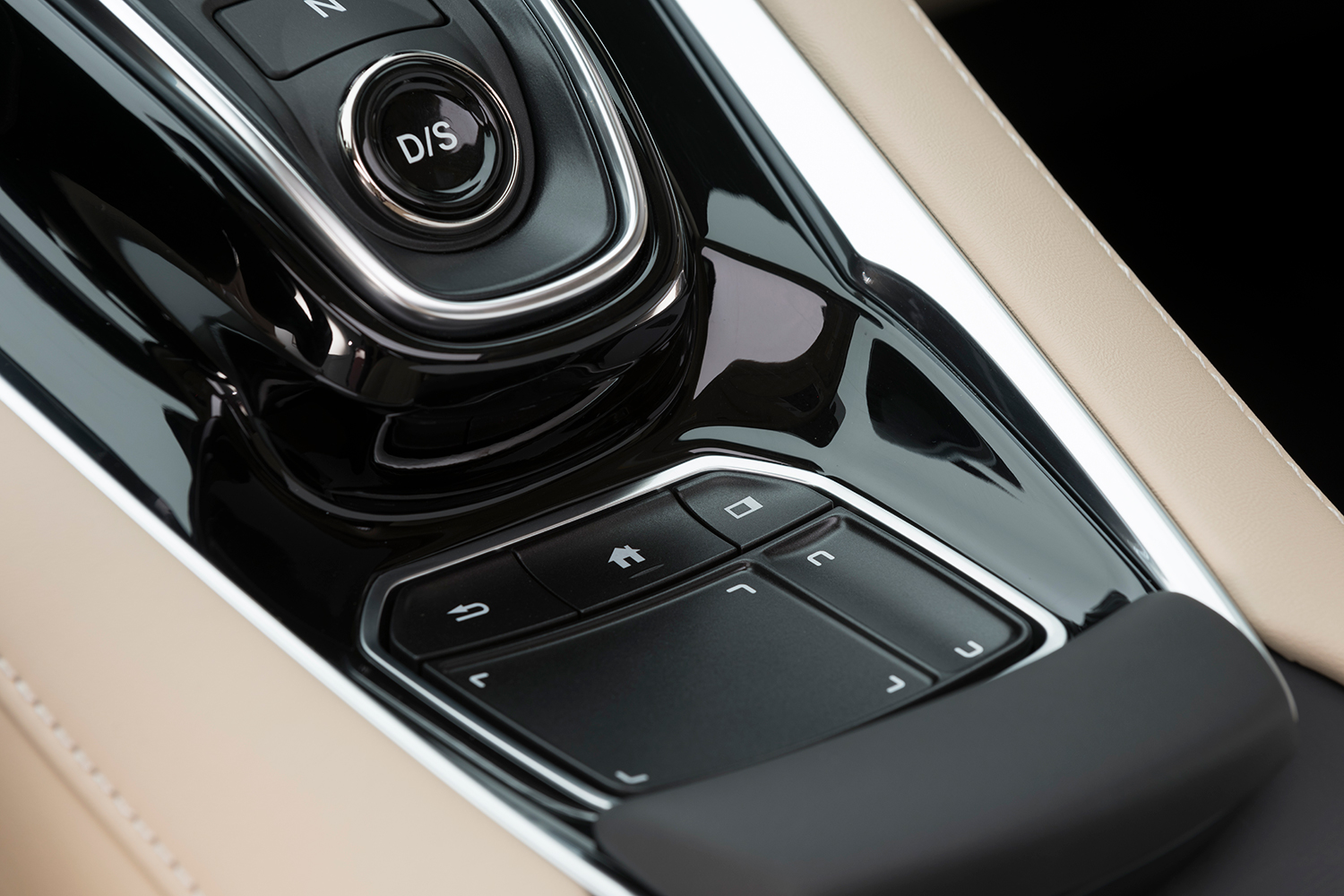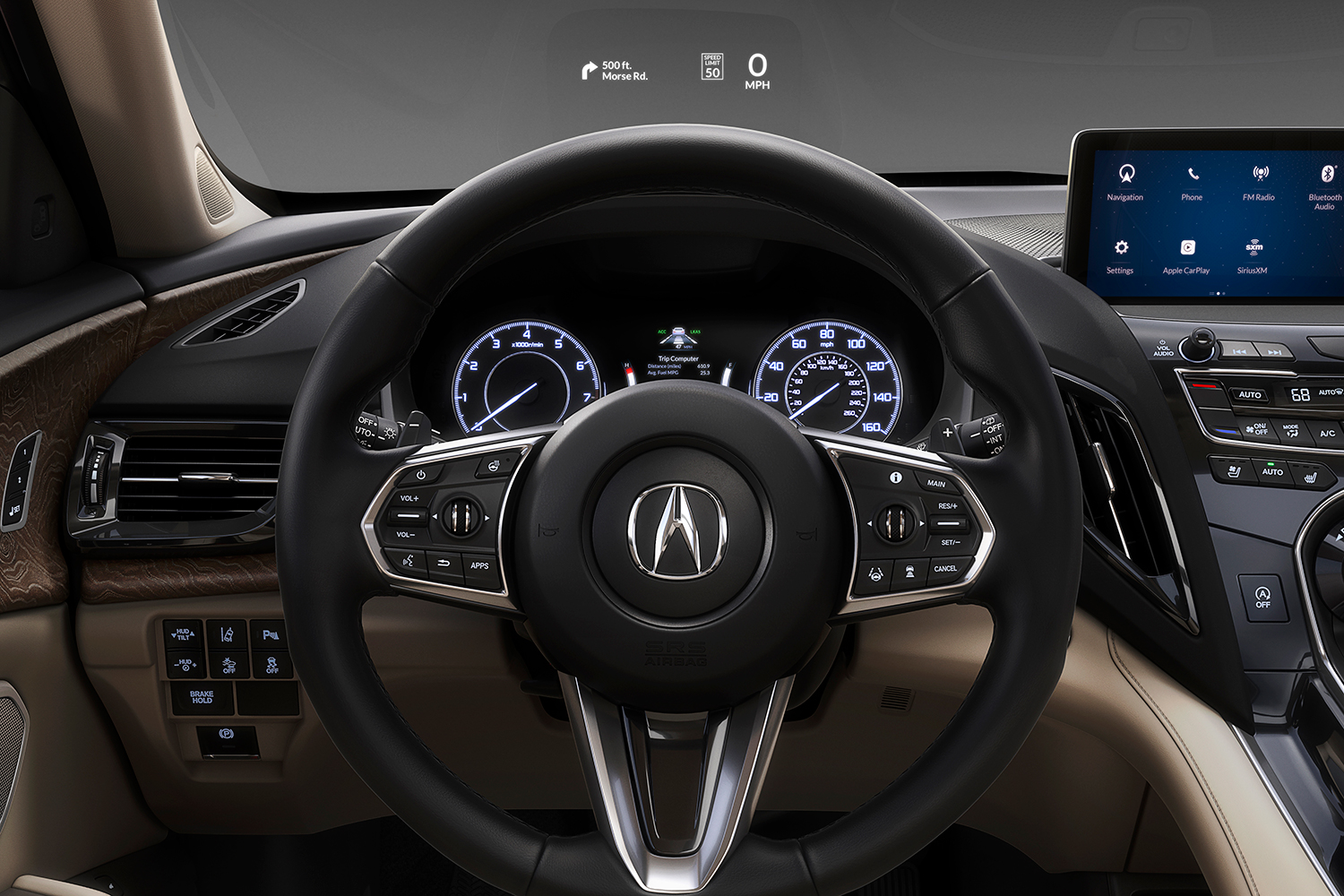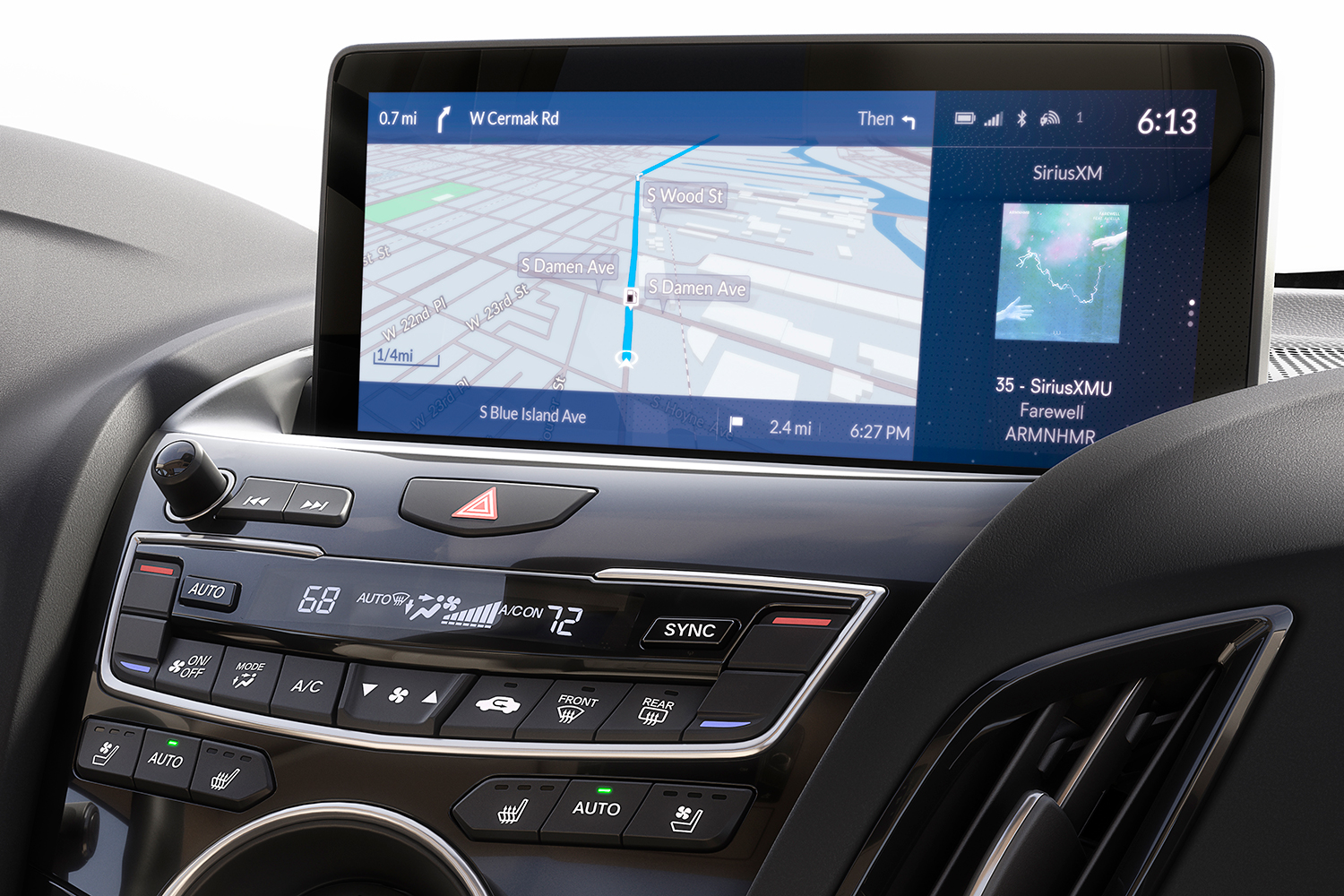By nature, an in-car infotainment system creates a distraction for the driver.
The better units on the market encompass a diverse selection of menus, options, and icons that let the driver perform dozens of functions including getting directions, calling home, or finding a bean and cheese burrito. Controller knobs, touch screens, voice commands, and/or gesture controls enable motorists to navigate each software. Acura asserts it has found a better, more intuitive user interface it calls True Touchpad. Digital Trends checked it out in the 2019 RDX Prototype, a barely-disguised preview of the Japanese luxury brand’s next SUV.
Two main components make up the Android-based system. The first is a high-resolution, 10.2-inch color screen positioned on top of the dashboard, right in the driver’s line of sight. The second is a touch pad not unlike the one you use every day on your laptop. It’s located on the center console between the buttons that replace the gear selector and a large storage bin.
It’s the first time the technology appears in a car, according to Acura, and it’s remarkably simple to use.
Absolute positioning technology and 1:1 mapping let the driver (or the front passenger) navigate the infotainment system. This is the first time the technology appears in a car, according to Acura, and it’s remarkably simple to use once you get the hang of it. Each part of the touch pad corresponds to the same part on the screen. Let’s say the navigation icon is on the top left side of the screen. Place your finger on the top left side of the touch pad to highlight it and click on it to access it.
We found there is a small learning curve to overcome before mastering the system. The touch pad is relatively small so it will take a few tries before you figure out whether you’re selecting the square on the top left corner of the screen or the box right next to it. Steve Hansen, the chief engineer for the RDX, told Digital Trends motorists can rearrange the icons on the screen and add the ones they frequently use to a list of favorites for easy access. “The setup helps drivers keep their hands down and their eyes up,” Hansen explained.

Acura split the screen into two zones. For example, it can show the map on a small tile tucked away on the right side of the screen and display the icon menu on a larger tile found on the left side. If you’d rather have a bigger map, or if you don’t need directions, you can instantly swap the two displays by pushing a button next to the touch pad.
Don’t let the prototype label fool you: the system is ready for production. It will make its debut in the all-new 2019 RDX, and it’s safe to bet it will seep down into the brand’s other models shortly after.
What else is new?
The prototype suggests the next-generation RDX will take a notable leap forward in terms of design. It wears a sharper look with a front end that falls in line with Acura’s current design language. Stylists made the grille more assertive, added sharper headlights, and embedded discreet creases in the side panels to reduce visual mass. The longer roof line flows into a more upright hatch. Out back, the lights sit higher than before.
“This system helps drivers keep their hands down and their eyes up.”
Stick a measuring tape to the body and you’ll notice the RDX is a little bit longer and wider than the outgoing model. Beauty is, of course, subjective; to us, the individual styling cues come together to give Acura’s smallest SUV an elegant, upmarket look.
The updates extend to the engine bay. While the current RDX relies on a V6 for power, its replacement will surf the engine downsizing wave sweeping across the automotive industry. Popping the prototype’s hood reveals a turbocharged 2.0-liter four-cylinder that shares its basic architecture with the engine found in a number of Honda products, including the Civic Type R and the Accord. Hansen told us Acura made numerous tweaks to the two-liter before dropping it in the RDX; don’t expect to find a hot-rodded Type R engine in a family-friendly SUV.
He’s not ready to talk about specifications yet; all we know is the turbo four makes 40 percent more torque than the current car’s V6, which pumps out 252 pound-feet. We estimate the final figure will lie in the vicinity of 350 pound-feet, a generous increase that motorists will certainly notice in every day driving conditions. A 10-speed automatic transmission shared with parent company Honda will help improve fuel economy.
What’s next?
Acura calls the RDX a prototype but it promises the production version will reach showrooms before the end of the summer. How much of it will carry over? Intrigued, we asked Hansen. He told us the concept-specific parts are limited to the futuristic-looking mirrors, the 21-inch wheels, the paint color, and the exhaust tips. As far as the rest goes, what you see is what you’ll get when the model goes on sale.
While nothing is official yet, we realistically expect to see the production model make its public debut at this year’s edition of the New York Auto Show, which opens its doors in late March.
